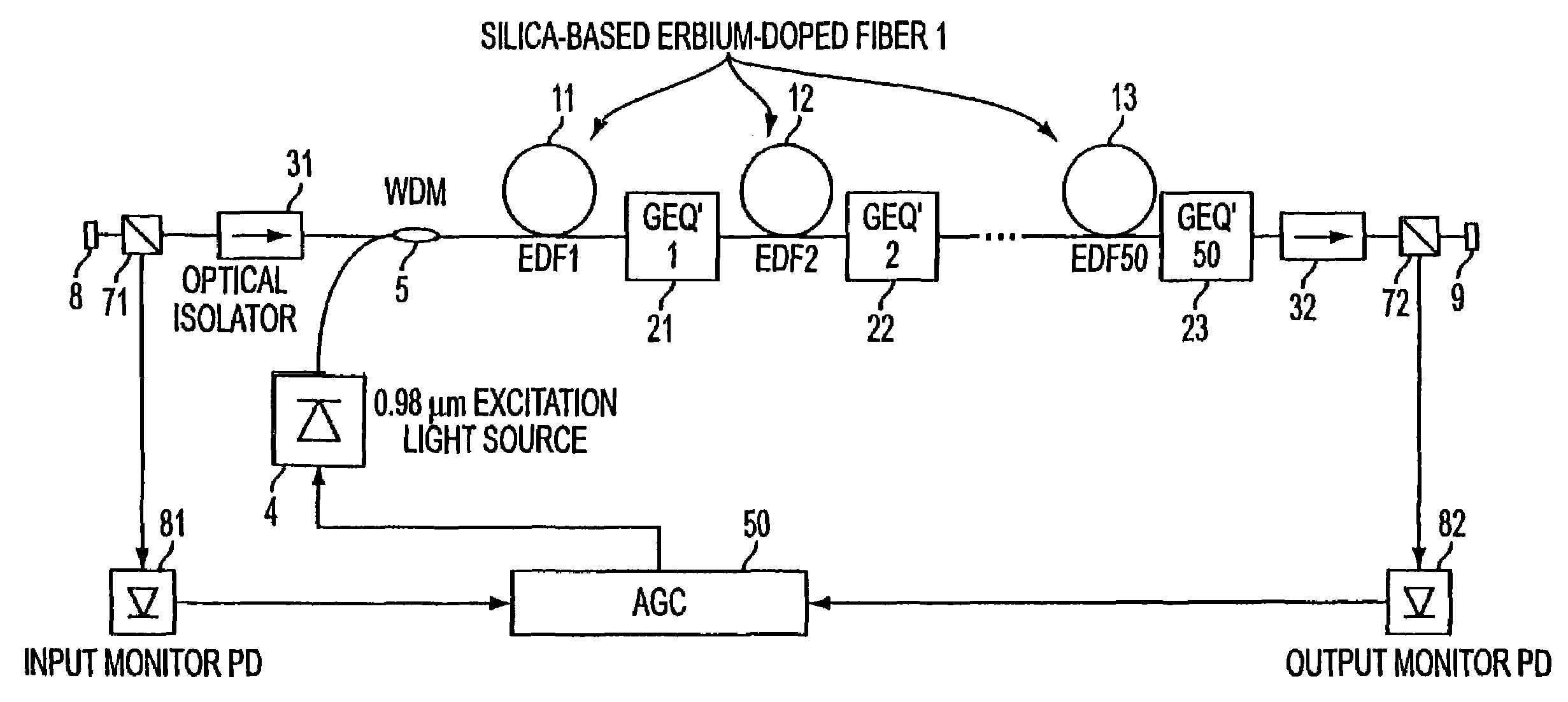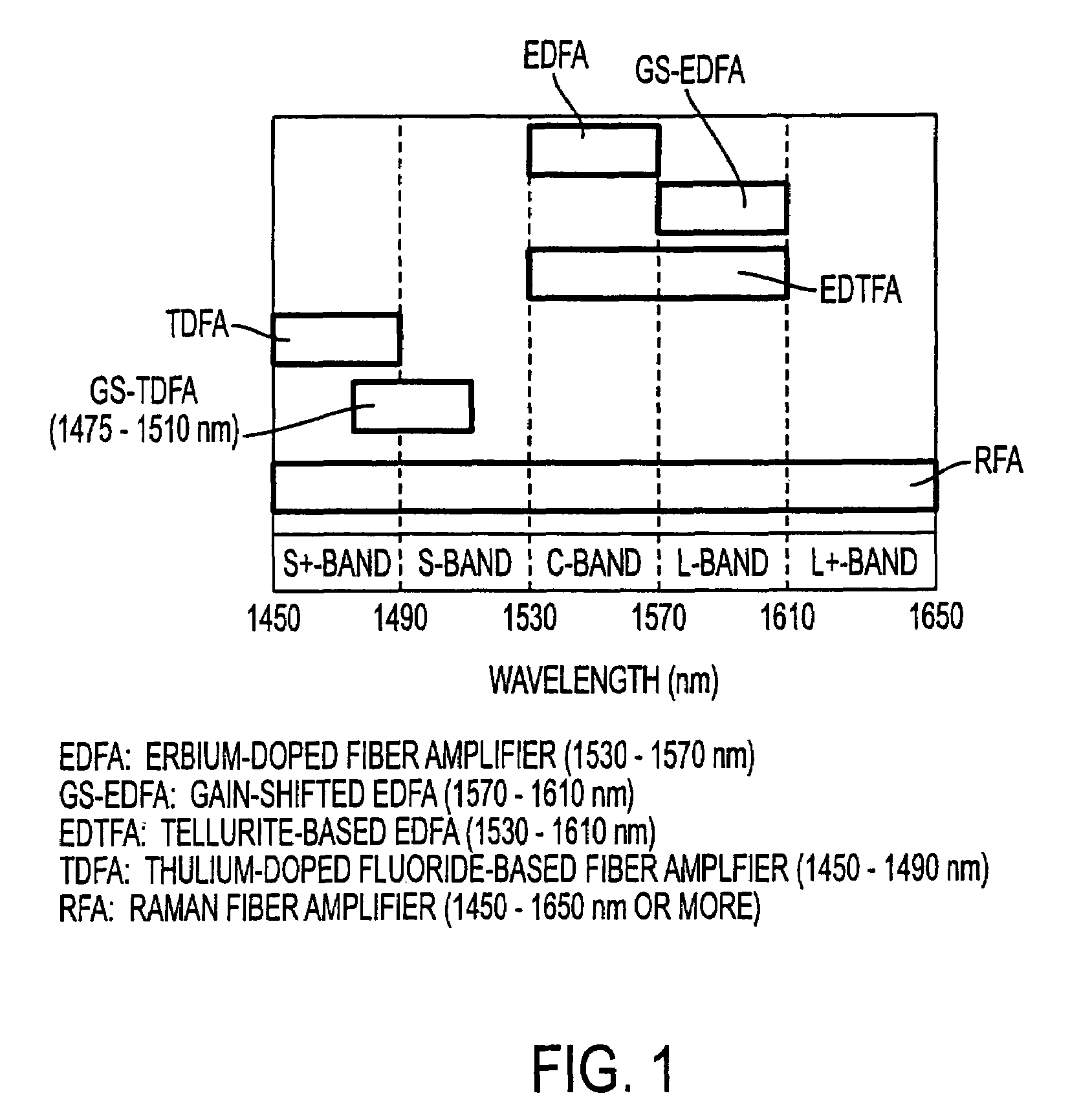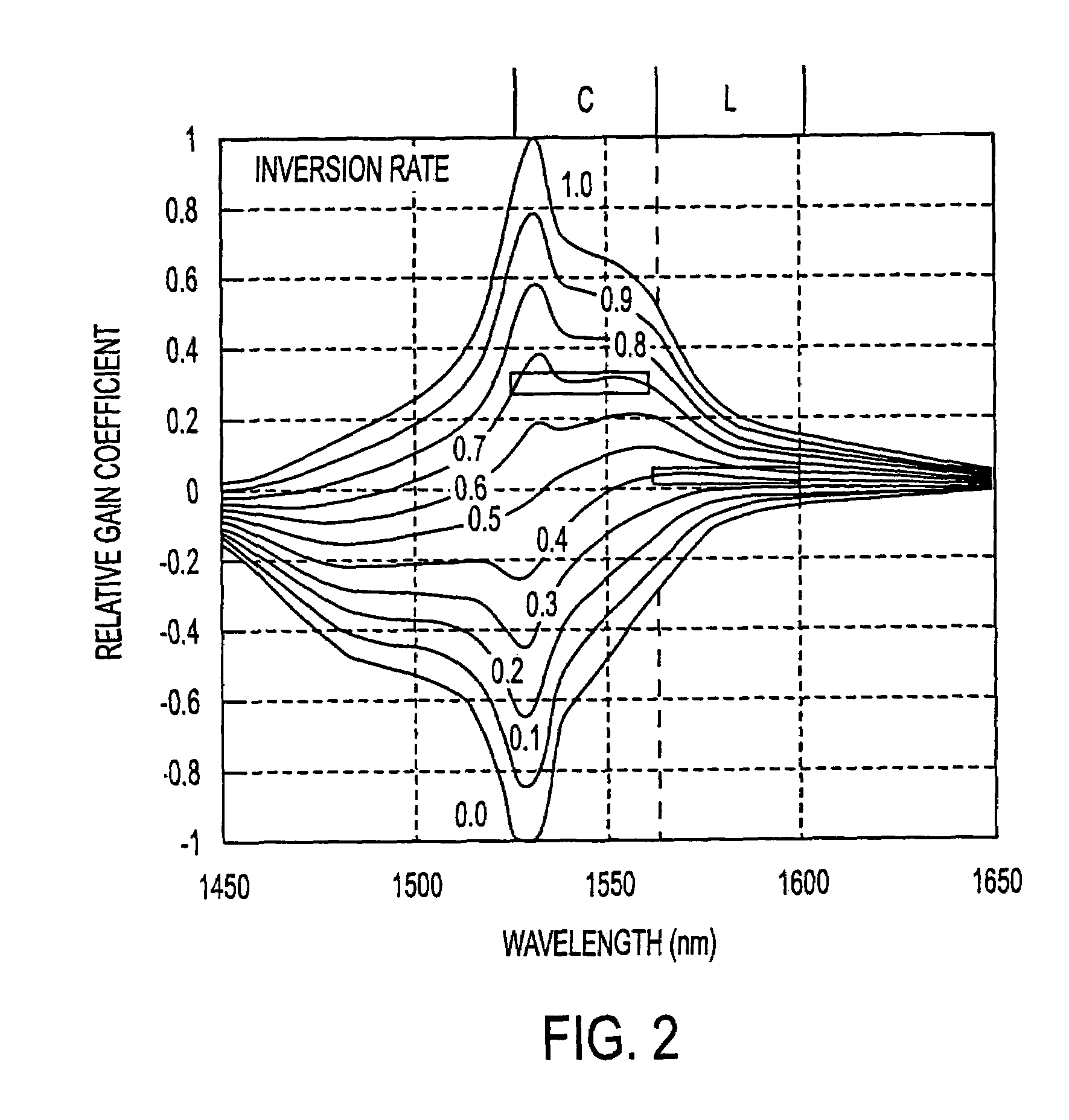Optical amplification method and device usable with bands other than the C-band
a technology of optical amplification and band, applied in the direction of semiconductor amplifier structure, multiplex communication, electronic repeaters, etc., can solve the problems of limited 1610 to 1650 nm band, small gain per unit length, and difficulty in success of optical amplification, so as to achieve the effect of attenuating the wavelength gain peak
- Summary
- Abstract
- Description
- Claims
- Application Information
AI Technical Summary
Benefits of technology
Problems solved by technology
Method used
Image
Examples
Embodiment Construction
[0041]FIG. 2 shows the wavelength gain characteristics in terms of relative gain coefficients, or gain coefficient (dB / m), for silica erbium-doped fiber (EDF) amplifiers. The population inversion rates are defined by the proportion of the erbium ions that are excited. The rate is 1.0 when all of the ions are excited (i.e., when all electrons are excited to a higher level), and if none of the ions are excited (i.e., all are in the non-excited level), then the population inversion rate is 0.0. The relative gain coefficient is labeled on the vertical axis as the gain per unit length.
[0042]FIG. 2 corresponds with FIG. 3 of Y. Sun, J. L. Zyskind and A. K. Srivastava, “Average Inversion Level, Modeling, and Physics of Erbium-Doped Fiber Amplifiers,” IEEE Journal of Selected Topics in Quantum Electronics, Vol. 3, No. 4, pp. 991-1007, August 1997. The relative gain coefficients shown in FIG. 2 are applicable to any of a plurality of amplification mediums. The FIG. 2 relative gain coefficien...
PUM
 Login to View More
Login to View More Abstract
Description
Claims
Application Information
 Login to View More
Login to View More - R&D
- Intellectual Property
- Life Sciences
- Materials
- Tech Scout
- Unparalleled Data Quality
- Higher Quality Content
- 60% Fewer Hallucinations
Browse by: Latest US Patents, China's latest patents, Technical Efficacy Thesaurus, Application Domain, Technology Topic, Popular Technical Reports.
© 2025 PatSnap. All rights reserved.Legal|Privacy policy|Modern Slavery Act Transparency Statement|Sitemap|About US| Contact US: help@patsnap.com



